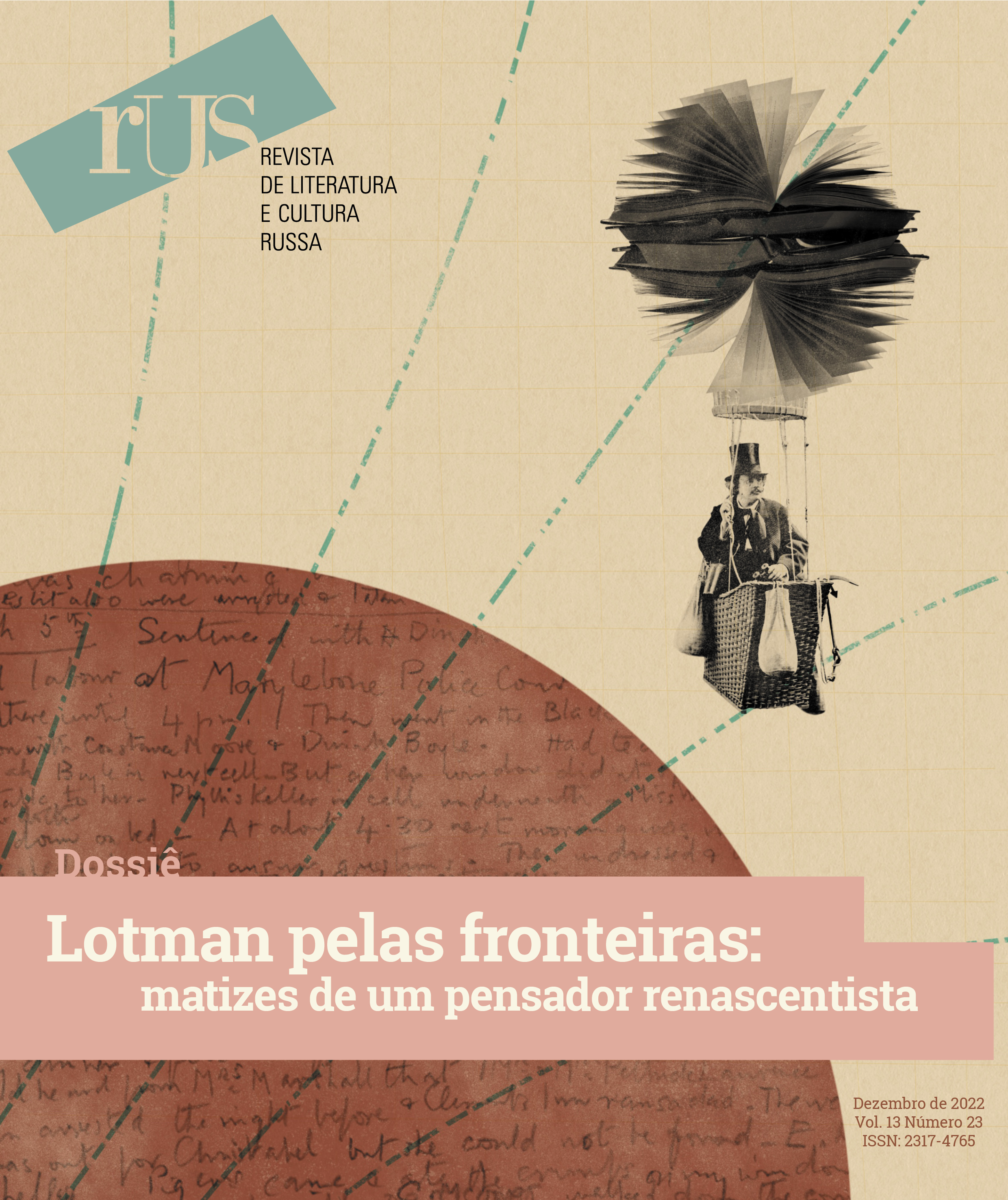Kutcha otvetov v more voprosov: construções binominais quantificadoras da língua russa
DOI:
https://doi.org/10.11606/issn.2317-4765.rus.2022.202328Palavras-chave:
Construções binominais quantificadoras, Língua russa, Modelos baseados no usoResumo
Neste artigo investigam-se construções binominais quantificadoras do russo, preenchidas pelos lexemas kutcha (monte) e more (mar). Adota-se como fundamentação teórica a Gramática de Construções, que propõe uma abordagem em rede para a análise dos fenômenos linguísticos. Como procedimento metodológico, recorre-se à análise qualitativa de dados de uso da língua, dos séculos XVIII ao XXI, extraídos do Russian National Corpus. Os resultados da análise reforçam a hipótese de que a construção especificada com kutcha parece ser mais antiga do que a com more e estar mais rotinizada na rede de construções binominais quantificadoras da língua. Além disso, sugerem que, diferentemente de kutcha, que parece atuar como elemento não marcado da rede de construções binominais quantificadoras, more parece exibir um perfil semântico específico.
Downloads
Referências
ALONSO, K. S. B. Construções binominais quantitativas e construção de modificação de grau: uma abordagem baseada no uso. 2010. Tese (Doutorado em Linguística) – PPG em Linguística, Universidade Federal do Rio de Janeiro, Rio de Janeiro, 2010.
DIESSEL, H. Usage-based construction grammar. In: DABROWSKA, Ewa; DIVJAK, Dagmar (eds.). Handbook of Cognitive Linguistics. Berlin: Mouton de Gruyter, 2015, pp. 295-321.
DIESSEL, H. The grammar network: how language structure is shaped by language use. Cambridge: University Press, 2019.
FUMAUX, N. C. A. Construcionalização de ‘um monte de SN’: uma abordagem centrada no uso. 2018. Dissertação (Mestrado em Linguística) – PPG em Linguística, Universidade Federal do Rio de Janeiro, 2018.
GOLDBERG, A. E. A construction grammar approach to argument structure. Chicago/London: The University of Chicago Press, 1995.
GOLDBERG, A. E. Constructions at work: the nature of generalization in language. Oxford: Oxford University Press, 2006.
LAKOFF, G.; JOHNSON, M. Metaphors we live by. Chicago: University Press, 1980.
LANGACKER, R. Foundations of Cognitive Grammar. Stanford: Stanford University Press, 1991.
TRAUGOTT, E. C. Grammaticalization, constructions and the incremental development of language: suggestions from the development of degree modifiers in English. In: ECKARDT, R.; JÄGER, G.; VEENSTRA, T. (eds.). Variation, selection, development: probing the evolutionary model of language change. Berlin: Mouton de Gruyter, 2008. pp. 219–250.
VERVECKKEN, K. D. Binominal quantifiers in Spanish: conceptually-driven analogy in diachrony and synchrony. Berlin: Mouton De Gruyter, 2015.
PÚCHKIN, A. Pikovaia dama. Istotchnik teksta: Sobranie sotchinenii A. S. Púchkina v desiati tomakh. Moskva: GIKHL, 1960, t. 5. Disponível em: http://az.lib.ru/p/pushkin_a_s/text_0426.shtml. Acesso em: 1 set. 2022.
RAKHILINA, E. Lingvistika konstruktsii. Moskva: Abukovnik, 2009.
FASMER, M. Etimologitcheskii slovar’ russkogo iazyka. T. II. Moskva: Progress, 1986.
Publicado
Edição
Seção
Licença
Copyright (c) 2022 Diego Leite de Oliveira

Este trabalho está licenciado sob uma licença Creative Commons Attribution-NonCommercial-ShareAlike 4.0 International License.
Os autores que publicam na RUS concordam com os seguintes termos:
a. Os autores mantém os direitos autorais e concedem à revista o direito de primeira publicação, com o trabalho simultaneamente licenciado sob a Licença Creative Commons Atribuição 4.0 Internacional (CC BY-NC-SA) que permite o compartilhamento do trabalho com reconhecimento da autoria e publicação inicial nesta revista.
b. Os autores têm autorização para assumir contratos adicionais separadamente, para distribuição não-exclusiva da versão do trabalho publicada nesta revista (ex.: publicar em repositório institucional ou como capítulo de livro), com reconhecimento de autoria e publicação inicial nesta revista.
c. Os autores têm permissão e são estimulados a publicar e distribuir seu trabalho online (ex.: em repositórios institucionais ou na sua página pessoal) a qualquer ponto antes ou durante o processo editorial, já que isso pode gerar alterações produtivas, bem como aumentar o impacto e a citação do trabalho publicado (Veja O Efeito do Acesso Livre).





